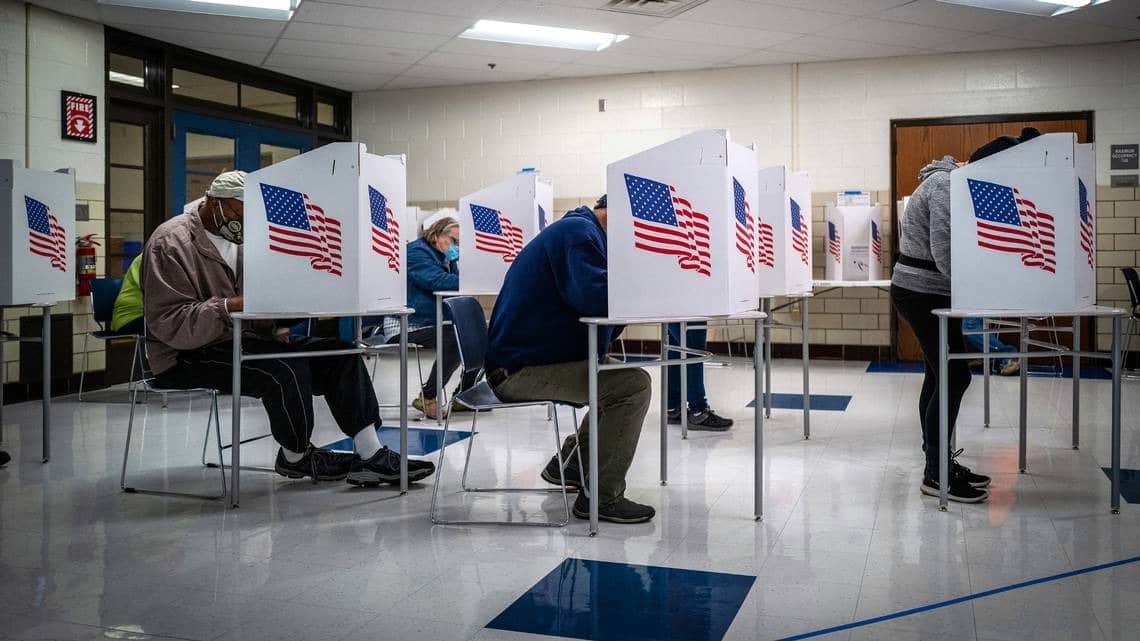With the United States gearing up for yet another presidential election, candidates from the two major political parties of the country—the Democrats and Republicans—are gearing up their campaign machinery. This article explains, step by step, how the U.S. presidential election process works—from early campaigning to the final electoral college vote that eventually leads to the swearing-in of the President and the Vice President.
In the United States, election campaigns officially begin a year in advance, with the official announcement by both Democratic and Republican aspirants for the White House. Each candidate assembles a dedicated team of strategists, fundraisers, and volunteers to tackle the tough road to the presidency.
Candidates travel around the country, holding rallies, reaching out to voters, and raising vital campaign money on the campaign trail. This is an important time in the election schedule because this is where the creation of their platforms begins, along with mobilising the electorate for support.
After all, one of the most-watched events in the early stages of a U.S. presidential campaign is the televised series of debates. More than a test of the candidates and their policies or platforms, debates are also a critical test of the candidate’s ability to think on their feet.
Candidates prepare for the hardest questions on high-priority national issues, put forth their vision for the country, and defend their ideas against other strong arguments from the competition in a crowded party field. In the debate stage, voters get their first comprehensive look at the candidates, helping them shape early opinions on who could best represent their party and, ultimately, the nation.
Overview of US Election Process: Step-by-Step
The road to the U.S. presidency is long and convoluted; there is an electoral process involving many steps and beginning several months before the general election. Let’s take a closer look at each key phase.
Step 1: Primaries and Caucuses
The primaries and the caucuses mark the first official step of the election process. This chapter begins in February and is a crucial component in ascertaining the presidential candidate for each party. Primaries involve the registered members of each party voting to show their support for any particular candidate that they endorse. Caucuses, on the other hand, comprise several meetings that commence with party members discussing before electing their candidate.
These primaries and caucuses work their way through the states at different times, but traditionally Iowa, New Hampshire, Nevada, and South Carolina are first in line. Historically, these first states also set trends, often determining the candidate that will win the party nomination. Candidates fight hard in these states to get an early advantage so that they can gain momentum that may carry them through the rest of the primaries.
- Caucuses: These are held in several states, whereby caucuses are activities where the members debate and discuss matters concerning candidates openly and then cast their votes. This is a wholly collective and participatory process attended by smaller groups of voters; often, local party dynamics strongly influence caucuses.
- Primaries: These are the broader form of elections held by the states, in which registered party members can attend and, in privacy, vote for their favored candidate. The primary elections further break down into open, closed, and semi-open, distinguished only by their accessibility to the voters depending on the state’s rules.
Step 2: National conventions – selection of the Presidential candidate
Once the primaries and caucuses have been finished, each party holds a national convention during the summer. Delegates from every region attend to formally endorse a candidate that was decided during the primary or caucus phase.
Both parties make an official announcement of who their presidential candidate is, as well as any last-minute details regarding their party platform, a document that summarizes major issues and initiatives. At the convention, the presidential candidate also selects a vice-presidential running mate.
A strategic choice, the ticket is generally balanced to add such qualities or appeal that the presidential candidate lacks. Once the ticket is complete, the two candidates—President and Vice President—embark on a campaign across the country to win the support of the general public.
Step 3: The General Election-the popular vote
General election – The general election is held on the first Tuesday in November. In this stage, eligible voters in all 50 states and the District of Columbia go to the polls to choose the President and the Vice President. While every voter theoretically votes for his or her preferred candidate, the vote indirectly determines which set of electors in the state will be the group participating in the electoral college.
- The Winner-Takes-All System: Except for Maine and Nebraska, all states have granted their electoral votes to the winner of the popular vote within a state. Logically this needed to be the case because such a “winner-takes-all system” would make larger populated states more influential in the election since they would have more electoral votes than those less predominantly populated.
- Electors and the Electoral College: The outcome of the general election in each state is what identifies who the electors are, and that will determine who the next President will be, in that they cast their votes in the electoral college. The candidate receiving at least 270 out of a total of 538 electoral votes becomes the President-elect.
Step 4: The Electoral College – finalising the vote
The U.S. electoral college makes the American presidential election different from most democratic systems in the world. While most democracies in the world have direct elections where a candidate needs to win a majority of votes, the electoral college, on the other hand, dictates the winning by gaining a majority of the allocated electoral votes. The number of electors provided by each state is based on its representation in Congress, with each state entitled to some electors equal to the sum of senators and representatives.
Then, in December, there is an electoral college vote when the electors come to their respective states to cast their votes. Every elector’s vote generally reflects the popular vote of his or her state, although, in all the states, there are no absolute legal requirements to do so. Once the electoral college votes have been tallied, the results are sent to Congress for a final confirmation in January.
Inauguration Day: when a new administration formally starts
After months of campaigning, debating, and voting, the President-elect and Vice President-elect are inaugurated in January. The inauguration is a highly ceremonial affair; the peaceful transfer of power is one of the high principles of American democracy.
The incoming President takes the oath of office on the steps of the Capitol building and addresses the nation with an inaugural speech that outlines some central direction of the administration’s priorities for the coming term.














